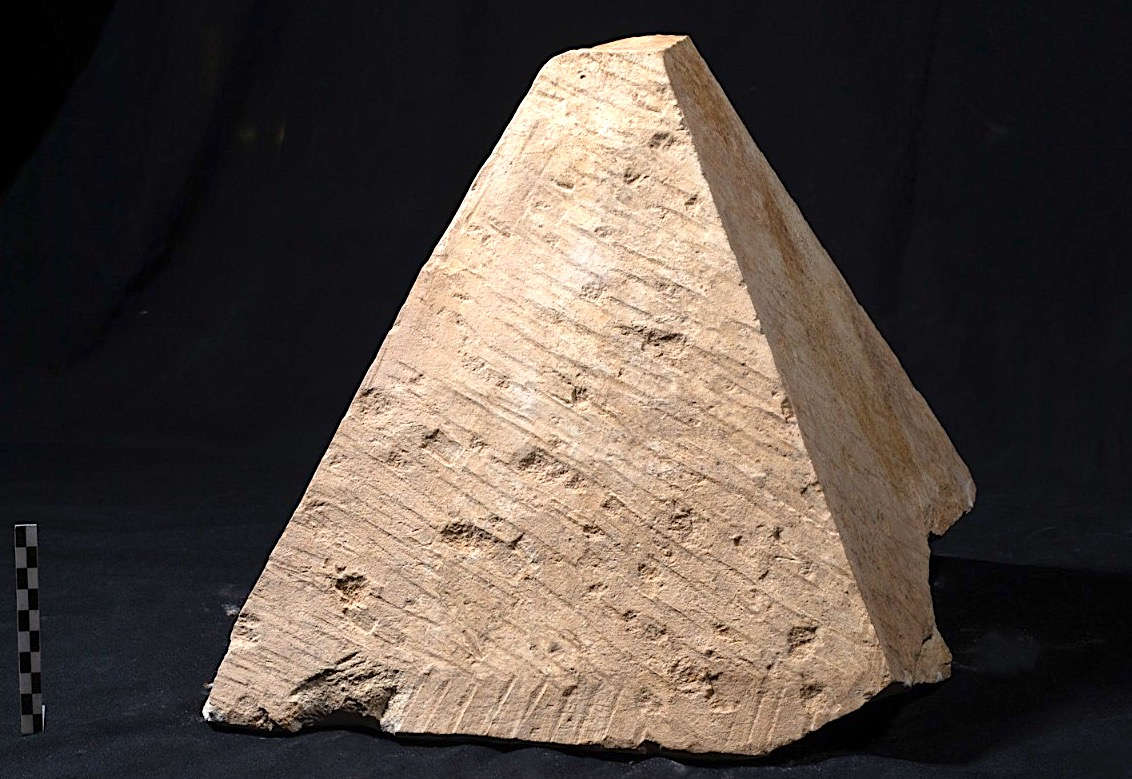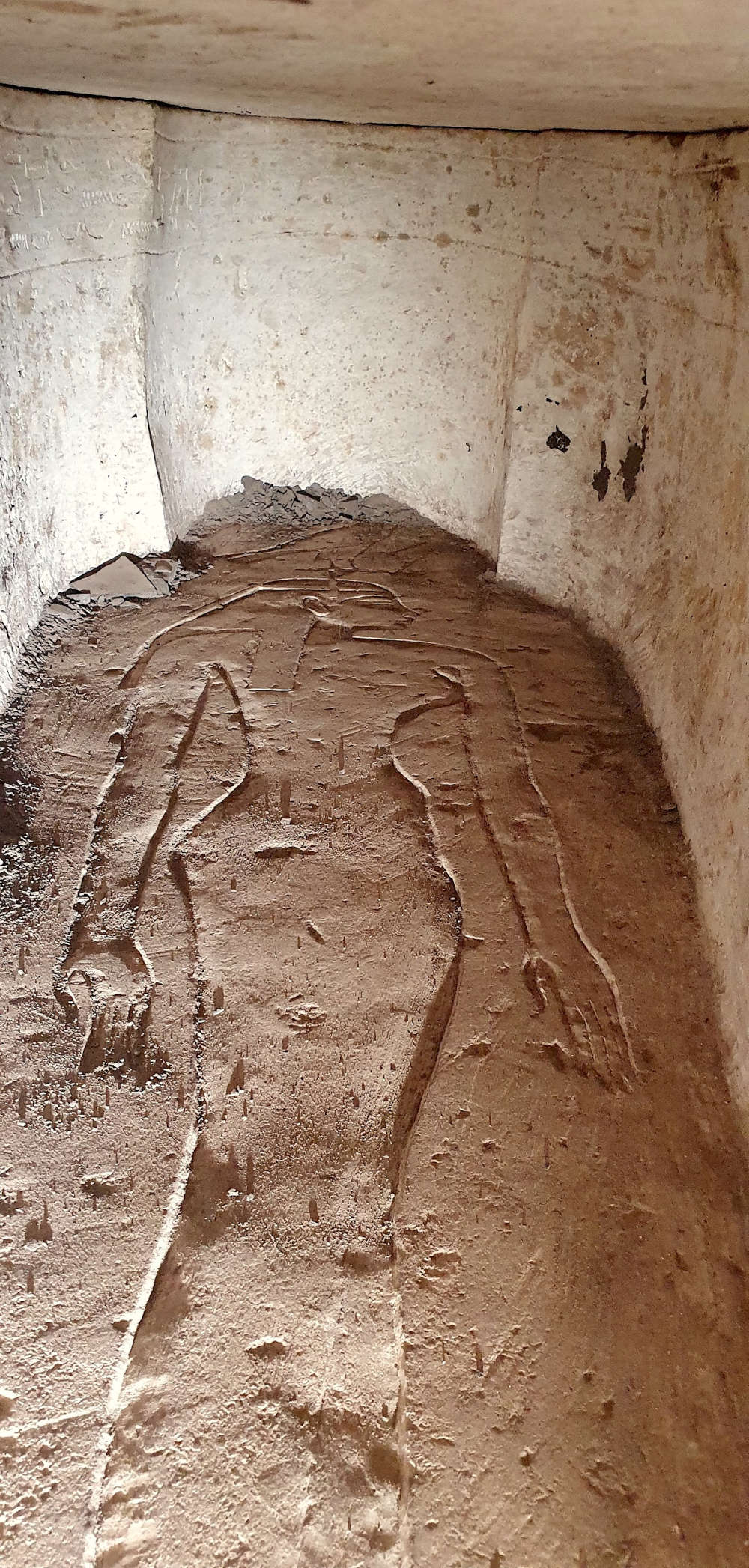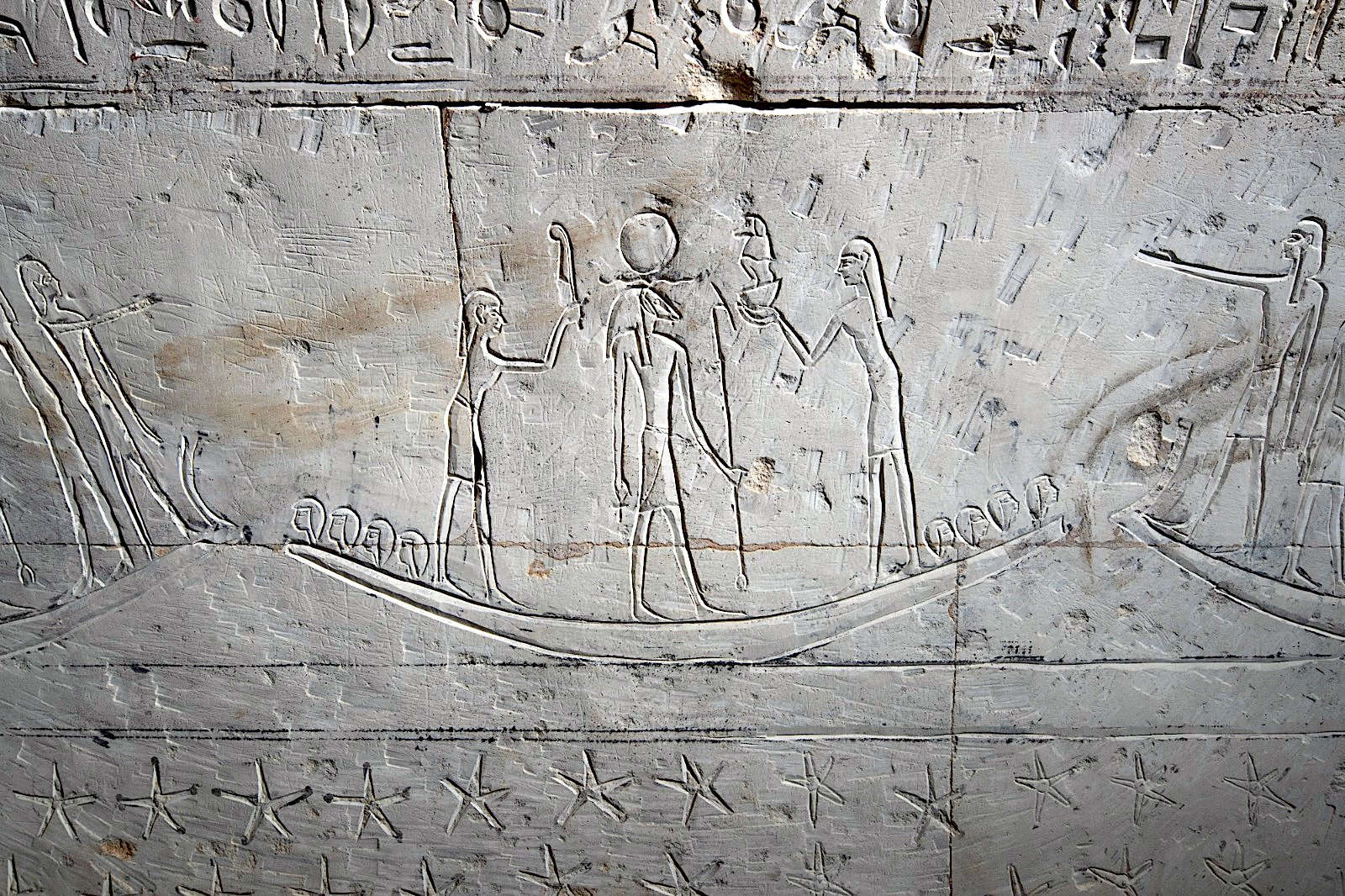Richly decorated tomb discovered in Egypt: it belonged to a royal scribe
Interesting archaeological discovery at the site of Abusir, Egypt, where a Czech team from the ÄŒeský egyptologický ústav(Czech Institute of Egyptology) of theUniversity Carolina in Prague broke the news last week that they had uncovered the tomb of a hitherto unknown royal dignitary from the time of the Persian invasion of Egypt (mid-1st millennium BCE.C.). It is a medium-sized, richly decorated pit tomb whose owner, a certain Djehutyemhat, held the position of royal scribe. Inside the burial chamber, covered with relief decorations, is a large stone sarcophagus, which bears hieroglyphic inscriptions and depictions of the gods, both outside and inside. All the magical-religious texts mentioned were intended to ensure the deceased a smooth entry into a blissful and well-protected eternal life in the afterlife.
Unfortunately, the tomb of the scribe Djehutyemhat was discovered almost empty, as it had been looted as early as the fifth century CE. From anthropological analysis of the skeletal remains, it was found that Djehutyemhat died at a relatively young age (around 25) and suffered from severe osteoporosis. This fact could assign him to the family of other inhabitants of the Abusir pit tomb burial ground, in whom this disease was similarly confirmed. It is therefore possible that most of the owners of the graves buried in this part of the Abusir necropolis belonged to a larger influential family. However, Djehutyemhat’s mother probably came from completely different backgrounds and from a different part of Egypt at that time. Her two names can be translated as “Nubian” and “Fox,” while the latter is written in an unusual form, most likely Berber.








Czech mission director Miroslav Bárta explained that although the upper part of the tomb was not found intact, the burial chamber contains numerous rich inscriptions and hieroglyphic scenes. Access to the burial chamber is through a small horizontal passage about three meters long. Surprisingly, inside the shaft leading to the tomb, numerous remains of scenes were discovered that were part of the decorations of the nearby tomb, which was built for a military leader of the time called “Menekhibnekau.” In addition, it was discovered that Djehutyemhat’s burial chamber is rich in inscriptions and scenes. On the north wall (the entrance) is a long series of religious texts against snake bites. Interestingly, the snakes mentioned in these magical texts represented a potential danger, but they could also act as powerful protectors of the deceased and his mummy. “While the entrance to the nearby Menechibnekon burial chamber was protected by the gatekeepers of Chapter 144 of the Book of the Dead, in the case of Djehutyemhat this role is played by the serpents of the Pyramid Texts,” specified Renata Landgráfová, director of the Institute of Egyptology and an expert on the language and texts of ancient Egypt.
The southern and western walls feature scenes of ritual offerings and a substantial list of offerings. As for the ceiling of the burial chamber, it depicts the journey of the sun across the sky, first in the morning and then in the evening, accompanied by hymns to the rising and setting sun.
The upper part of the sarcophagus cover and its longer sides displayed various passages from the Book of the Dead, including images of protective deities, but also excerpts from the much older Pyramid Texts, repeating in part sayings that also appear on the walls of the burial chamber. The shorter sides of the cover showed the goddesses Isis and Nephthys, along with protective incantations for the deceased. The bottom of the inner wall of the sarcophagus cover depicts the goddess of the west, Imentet, and its inner sides bear the so-called canopic texts uttered by this goddess and the earth god Geb. All the spiritual and ritual texts mentioned should have ensured the deceased a smooth entry into the blissful and well-protected eternal life in the afterlife.
“The tomb of the dignitary Djehutyemhat, recently discovered in the Abusír archaeological concession, is the last piece of knowledge in the mosaic of the history of ancient Egypt at the end of its splendor in the late period, in the sixth century B.C.,” says Miroslav Bárta. “The shaft tombs represent a special type of tombs from this era. They were created as a specific attempt at a renaissance by the elites of ancient Egypt and are based on the shape of the tomb of King Djoser, the founder of the famous Old Kingdom, the era of the pyramid builders in the 3rd millennium BCE.”
Detailed photographic documentation and analysis of artifacts and texts will continue in the coming months. Research on this tomb was funded by the KREAS project and a special grant from the Ministry of Education and Culture of the Czech Republic.
 |
| Richly decorated tomb discovered in Egypt: it belonged to a royal scribe |
Warning: the translation into English of the original Italian article was created using automatic tools. We undertake to review all articles, but we do not guarantee the total absence of inaccuracies in the translation due to the program. You can find the original by clicking on the ITA button. If you find any mistake,please contact us.






























